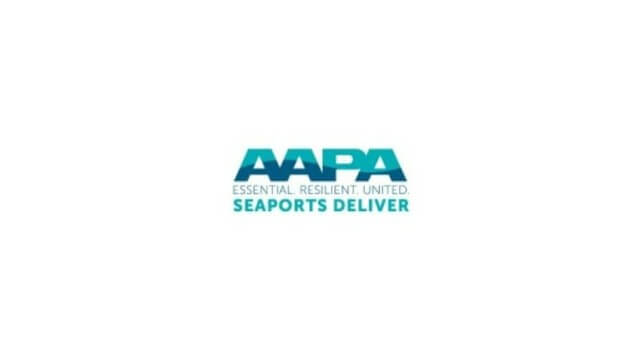AAPA to Testify to the U.S. House Committee on Seaport Operations

In the past two years, the U.S. has learned the issues facing seaports and the maritime industry are the same issues with which the entire country is grappling. Because supply chains are so critically important to the economic health of the nation, seaports — a key player in supply chains — are in the media more now than ever. Even more, representatives of seaports and the maritime industry are regularly getting a "seat at the table" with federal policymakers.
Just ahead of the New Year's commencement, President Biden invited President and CEO Chris Connor of the American Association of Port Authorities (AAPA) — the unified voice of seaports in the Americas — to attend his Supply Chain Task Force and CEOs meeting. The group of supply chain experts discussed, among other things, the extraordinary efforts by the nation’s seaports to enhance freight mobility and ease congestion, while handling record container volume ahead of the holiday season. This invitation from the President of the United States is indicative of the crucial importance seaports and maritime partners are playing in the economic function of America's global economy.
Tomorrow at 2:00 pm ET, AAPA's Chris Connor is testifying to the U.S. House Committee on Homeland Security's Subcommittee on Border Security, Facilitation, and Operations. Here, he will discuss the unprecedented requirements necessitated from seaports throughout the COVID-19 global pandemic, as well as the importance of the continuing role of ports as gateways to commerce and a first line of defense against potential threats.
AAPA has worked double time to promote seaports’ and maritime partners’ most urgent issues and has had features in several prominent media. Recently, President and CEO Chris Connor penned a piece — which was published in The Hill — called, "On the Supply Chain and Freight Fluidity: Enforcement, Not Reformation." In this piece, Chris argues new regulations curtailing freight fluidity charges do not serve the public interest and that a strengthened FMC will effectively regulate the U.S. international ocean transportation system for the benefit of U.S. exporters, importers, and consumers. He also discusses the supplemental appropriations in the Bipartisan Infrastructure Law (BIL), formerly known as — and sometimes still called — the Infrastructure Investment and Jobs Act (IIJA), and how these appropriations will both aid freight movement and be used to create a more fluid and resilient port system, including improvements to intermodal connectivity.
Likewise, Fox News’ “Fox and Friends” interviewed AAPA’s President and CEO on relevant issues to ports, including Bipartisan Infrastructure Law and funding recently passed into law. You can view the clip here.
The time to bolster supply chains is now, and AAPA has every intention of amplifying the voices of seaports and maritime industry representatives in the interest of encouraging efficiency, speed, safety, and reliability. With much more to report in the supply chain universe in the coming days and weeks, there will be much to discuss. Until then, here are some key talking points from the meetings with President Biden and Congress:
U.S. ports have made extraordinary efforts to enhance freight mobility and ease congestion, while handling record container volume, prior to and during this past holiday season.
America’s seaports are investing $31 billion in port infrastructure every year with plans to spend $163 billion between 2021-2025 to improve port facilities.
Thanks to longer operating hours, White House action, and the tireless efforts of U.S. port workers, a record number of containers are moving through U.S. ports every month.
The Bipartisan Infrastructure Law (BIL) — formerly known as, and sometimes still called, the Infrastructure Investment and Jobs Act (IIJA) — includes some significant funding for ports (about $5.225 billion of port-specific funding), though further and sustained funding are both sorely needed and a crucial step in repositioning America's competitive posture in global trade. According to AAPA, in the immediate term, America’s ports need $40 billion in waterside and landside investment just to meet the new floor of trade volumes — what the system is experiencing now. In the longer term, this dollar figure will grow, and AAPA's estimate says port waterside and landside investments need more than $66 billion to meet growing trade volumes over the next decade.
U.S. ports are ready to build $49.7 billion worth of green infrastructure projects over the next decade, but federal investment is required.
The movement of freight off of ports is improving, and it is happening due to extraordinary, collaborative efforts between all supply chain participants, coupled with creative solutions to ease congestion.
Lessons learned during these recent supply chain challenges, like the effectiveness of incentives — for example, those put into place by ocean carriers and terminal operators — have also come about thanks to the great efforts and collaboration of people in the supply chain.
Off-port property, like pop-up container yards, are a crucial element in accelerating freight movement.
AAPA is excited about the mandate calling for an Office of Multimodal Freight Infrastructure. AAPA and ports look forward to working with that office and its service as a strategic, nonpartisan, and geographically agnostic body to help develop smart and actionable direction and policy recommendations for the future.
The products and services herein described in this press release are not endorsed by The Maritime Executive.
